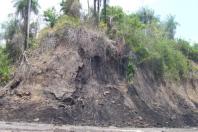Russia
The plot:
The sheer size of the Russian Federation's oil and gas reserves have historically and today been as important to the geopolitical strength of Russia as their military influence. With the breakup of the USSR and consequent lost oil and gas fields combining with conventional reserves going into permanent decline and Russia has even more reason to move forward with extreme extraction than many other nation states with similar reserves. Today in both bitumen and kerogen production Russia has international partners and resources to move forward in a very significant and destructive manner for decades to come.
The details:
Over eighty different deposits of oil shale around the country. Not to be confused with oil trapped in shale that would require 'fracking', which is also in enormous quantities in Russia.
Four major deposits of tar sands in the Russian Federation, with the largest called Tunguska remotely tucked away in Siberia. The three other deposits are in the Caucasus with the most well known of them being the Volga-Urals.
Over 35 billion tonnes of oil shale, estimated at 245 bn bbl in place of synthetic crude, estimates of recoverable undetermined but considered a very small fraction of the in place numbers.
Estimates have swung from under 200 million barrels of tar sands oil in extractable reserves to possibly 34 bn bbl recoverable. With such wild variance, the only known for development numbers are that Tatneft (regional state energy company) has entered into a partnership with Royal Dutch Shell.
Since WWII (When the USSR included Estonia) mining for oil shale to provide electricity has powered Leningrad/St Petersburg. Mining for feedstock to an adjacent Russian power plant continues today.
Beyond electricity in the Balkan northwest, oil shale is non-commercial in the Russian Federation at the current time.
Tatneft and Royal Dutch Shell have a joint venture that covers some twelve different tar sands deposits on a block, with the ultimate goal of 100 000 bpd in a few years time. Technology is undetermined as this block has both mining and in-situ depths. Tatneft is also experimenting with in-situ techniques and plans refining and upgrading of bitumen.


